07 Mar Finding Paradise at the Folk School: An Interview with Quilter Zak Foster
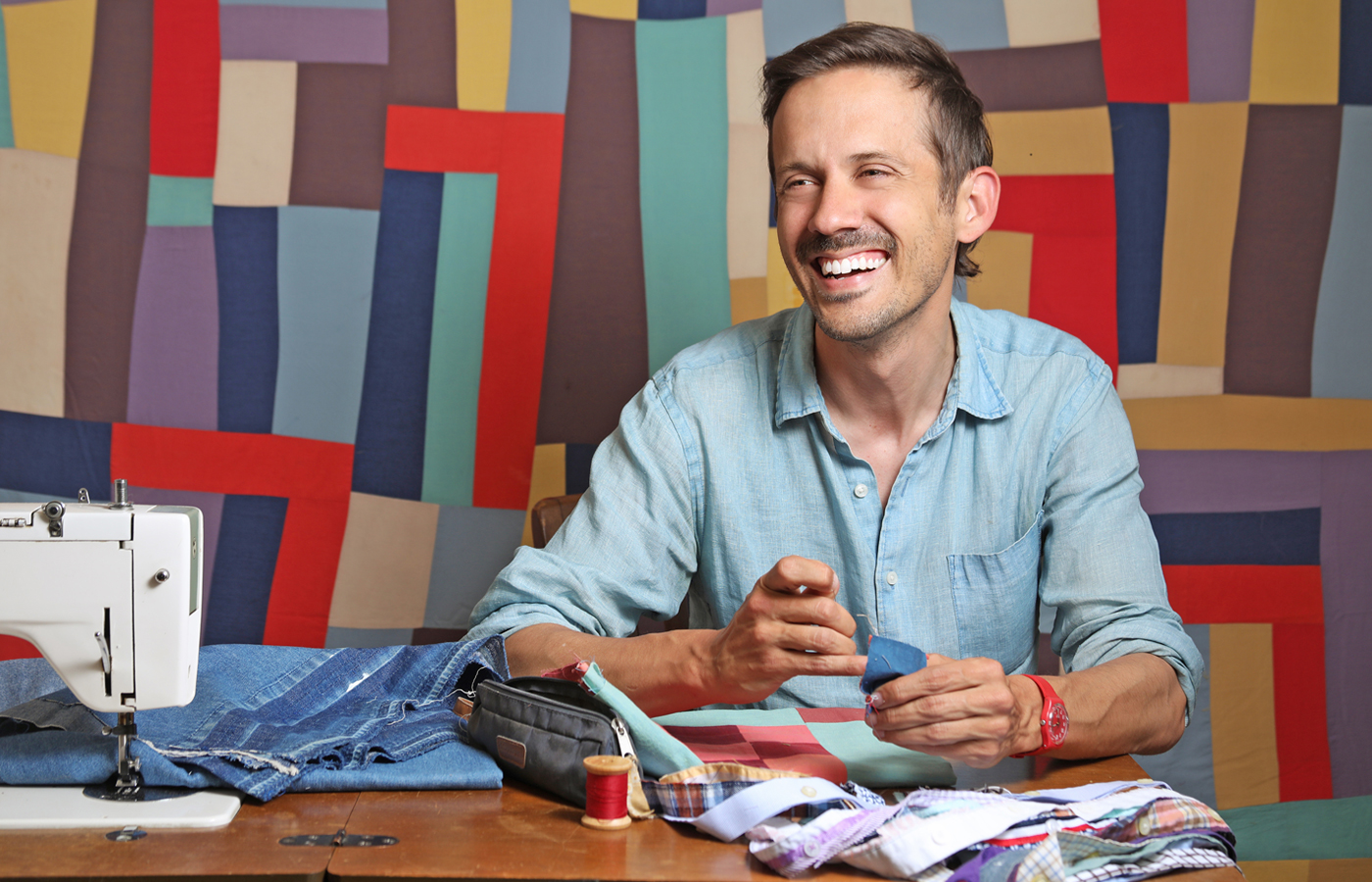
Community is key at the Folk School, so it’s exciting to have quilting artist and community organizer Zak Foster join us as our first Artist in Residence at Olive’s Porch. Zak will be both leading community projects and working on personal projects at the Folk School and Olive’s Porch through April 24.
Zak is a self-taught textile artist from Forsyth County, NC, whose work draws on Southern textile traditions and incorporates repurposed fabrics. Enjoy this interview with Zak to get to know about him, and his Folk School experience.
CP: What does working in community mean to you? How does community influence your work?
ZF: The Folk School and I converged just the right moment. In the last year or so, I’ve felt the role of community take a larger and larger focus in my work. I come from a long line of missionaries, teachers, judges, and farmers, so I suppose this community-orientation is something that’s been passed down through the generations.
As an artist, I’m always looking for ways to maximize the benefit of the time and energy I put into my projects to create the greatest good both in my life, and the lives of those around me. Working in community to me means that not only are we able to accomplish more together, but we create something that is deeper and richer than one person working alone.
CP: What community projects are you working on specifically during your residency?
ZF: I’m working on a number of community projects at the Folk School. Foremost, I’m hosting weekly sewing circles. People come and help me hand-sew a quilt I’m calling the Paradise Quilt, which is a project that involves the community in two ways.
First, I asked folks on social media to send me small scraps of green leafy material here to the Folk School, and (much to the chagrin of the folks that work in the office) hundreds of people did.
Then, in sewing circle each week, I show people basic hand-sewing techniques and we start patching those scraps together with the idea that it will create a quilt that’s lush, diverse, and verdant, and that will operate as a chance to reflect on our own participation in the natural world.
The Paradise Quilt will be a sister quilt of the Cataclysm Quilt inspired by this poem from the poet Jane Hirshfield. The Cataclysm Quilt is what happens if we don’t take care of Paradise Quilt, and because it’s made of heavier psychic elements, I’ll be working on that one myself and then sharing it with a community side-by-side with Paradise Quilt once it’s done.
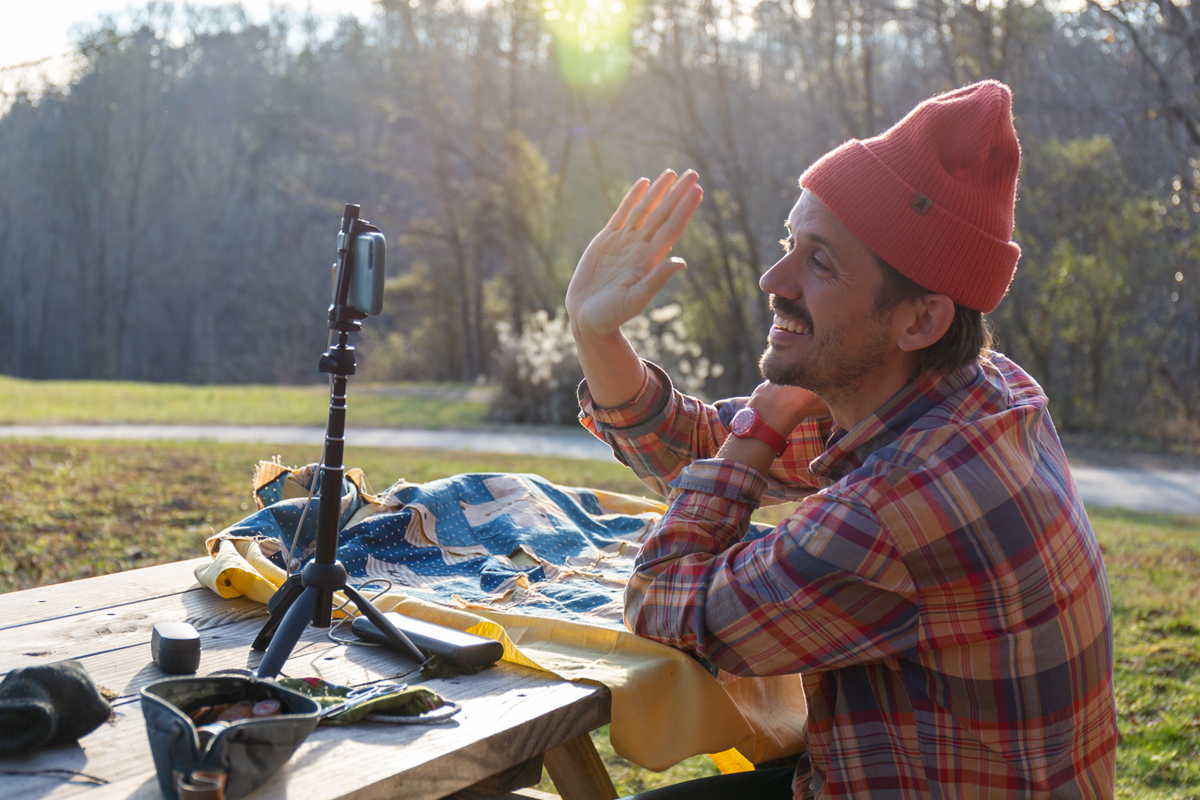
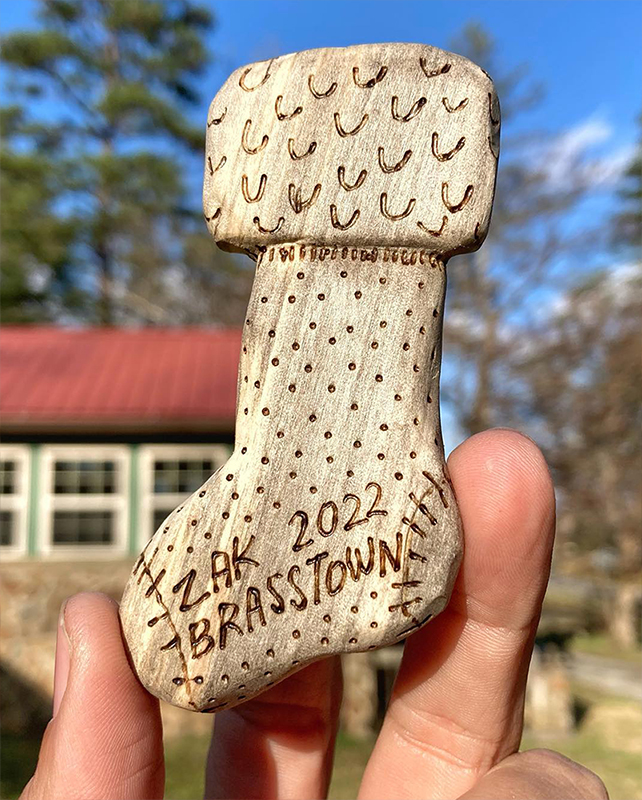
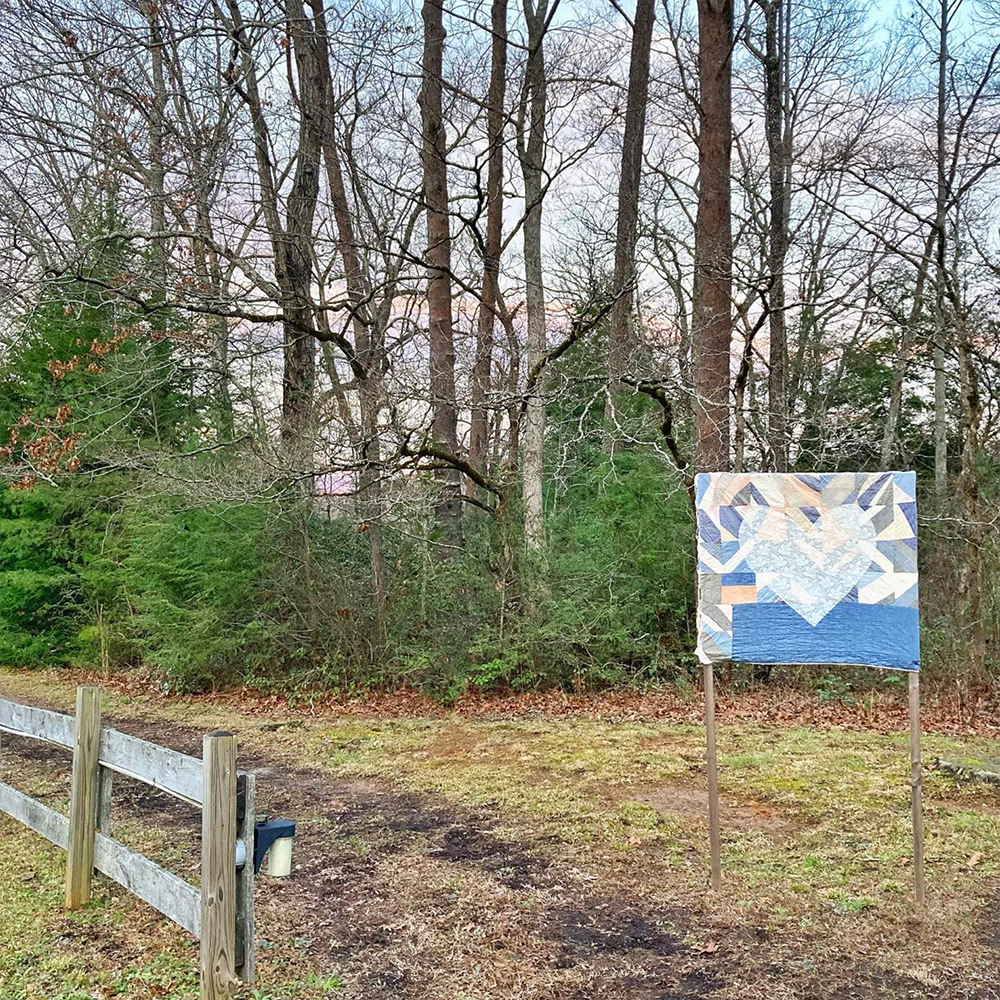
CP: What personal projects are you working on during your residency?
ZF: One of the personal projects I’m most excited about for 2022 is a new podcast/zine project I’m calling SEAMSIDE. The name is a reference to the backside of a piece of patchwork where you can see how a quilter has assembled all the individual parts to create a new whole. This is also the side that gets covered up once the quilt is finished, never to be seen again.
In this project, I invite textile artists to sit with me and sew for an hour as we talk about what I call the inner work of cloth, or how working with cloth has made us more human. After each conversation I offer further reflections on what we discussed in the form of a downloadable zine with journaling prompts. I would invite anybody who’s interested to check it out. It’s been a really nourishing experience for me, and I’ve met some incredible conversationalists who can shed new light on why making matters.
CP: Homecoming is a big theme in your work right now. Can you briefly describe the concept for the three homecoming quilts you are working on during your stay here?
ZF: One of the personal projects I’m working on during my residency at the Folk School is what I’m calling the Homecoming Series. It’s the first time I’ve ever been able to conceive of a series of quilts, and that’s due largely to the fact that Folk School was able to situate me in the Quilting Studio for the first few weeks of my residency.
This space was a boon to my creative process. With multiple design walls around the room, I was able to see my quilts side-by-side and think about how each piece spoke to each other as a series. The Homecoming quilts tell the story of my own shifting relationship with home over the course of the last 15 years. The first quilt represents 2008, when I was all excited about leaving North Carolina and moving to New York City. Everything was bright and shiny, I had everything figured out (or so I thought), and the path into the future looked rosy.
The second quilt represents those moments after I’d been in the city for a while: I had friends, I had a job, I had an apartment, I knew which subway to take without using the map, and yet they were moments where I found myself feeling newly lonesome for home. So the second quilt is a reflection of the shift I felt between the excitement of a new life in a big city and the nostalgia of home.
The last quilt in the series is the homecoming quilt itself. In the very near future, I plan on returning to my home state and settling down. I’m looking forward to what that can be like. One thing I hope to capture in this last quilt however, is even though moving home is a dream and something I wholeheartedly want to do, it doesn’t mean that there is a little bit of sadness about what I need to leave behind to make that happen. I hope to capture some of that nuance in the last quilt.
CP: Many of our regular students describe returning to campus as “coming back home to the Folk School.” For many, the Folk School campus evokes memories through sense: the first sight of the red sign, the wood pine smell of Keith House, the sound of metal clinking outside the Blacksmith Shop, the wet dew of a morning walk through the garden, sounds of Morningsong with sips of morning coffee. It all comes rushing back when you come back to campus. What are some of the sensory experiences that have stood out to you while you have been here?
ZF:
• The beautifully obnoxious song of the Carolina Wren every morning
• The openness of the sky through the winter trees
• When I first got here in January, I found a dried hydrangea on the ground and stuck it beside a birdhouse. It’s still there.
• The bluebirds!
• The ringing of the dinner bell
• Brasstown Creek
• My daily Keith House mocha (coffee + a pack of powdered hot chocolate)
CP: Where is your favorite place at the Folk School?
ZF: I’m a critter that roams the land. I feel at home in several places here, depending on mood and weather: down by the creek, at the circle in front of the History Center, the Keith House Library, the trails behind Blacksmithing, the woods behind the Cottage, the garden. I don’t think I can pick.
CP: How did the Olive’s Porch Artist in Residence program appeal to you? In what ways has it met your expectations?
ZF: When I applied, I had just quit teaching high school, a position I had held for 18 years. I was looking for opportunities to come back home to North Carolina. As an emerging artist, I felt like I was a good fit for the Olive’s Porch Residency. I saw the residency as a beautiful way to be in a community that is both geographically “my people,” and also interest-wise “my people.” Folk School community members are makers, crafters, artists, and storytellers. It just felt like the stars were aligning. It is such a dream being here.
I am in love with the idea of a craft community like the Folk School. It’s a place where many artists and makers can explore many different subjects, materials, and mediums. It’s so cool that in one building students are focusing on wood, and then in the next building they are focusing on enameling, or clay, or painting. I love that the weaving and quilting studios are adjacent to each other.
There’s all these little hives of activity, people who may be interested in a different material or different craft, different process, but who are all explorating craft possibilities. Recently, I took a weekend basketry class with Mary Doornbos. It opened my eyes and now I’m exploring ways to combine basketry and patchwork. It’s exciting!
CP: What do you like best about being an artist in residence?
ZF: I love being able to devote my full time and energy to creating work in a supportive community without having to think about meals and bills. I wish all my fellow artists here could share in this sweet situation. We live in a world where most artists have to hustle to get by, and the world’s the poorer for it. We need artists to remind us of how good this life can be, and economic realities are a real squeeze for anyone trying to do this good work.
CP: Do you sleep under a quilt? What quilt is on your bed right now?
ZF: I sleep under all my quilts! Nothing’s too precious. In fact someone said to me recently that one of the dangers of envisioning quilts as art is that we run the risk of removing them from the heartspace and thinking about them in solely cognitive terms. I think that’s a fair assessment. Quilts have so much to offer–from color to comfort–but if we get too precious about them, we remove their natural capacity to keep us warm and cozy.
About Zak Foster
Zak’s approach to design is intuitive and improvisational. He is especially drawn to preserving quilt stories, and he specializes in memory quilts and burial quilts. Zak’s work has been featured on the Met Gala’s red carpet and also appears in various galleries, magazines, and websites. His QUILTY NOOK community connects and inspires quilters and makers all over the world.
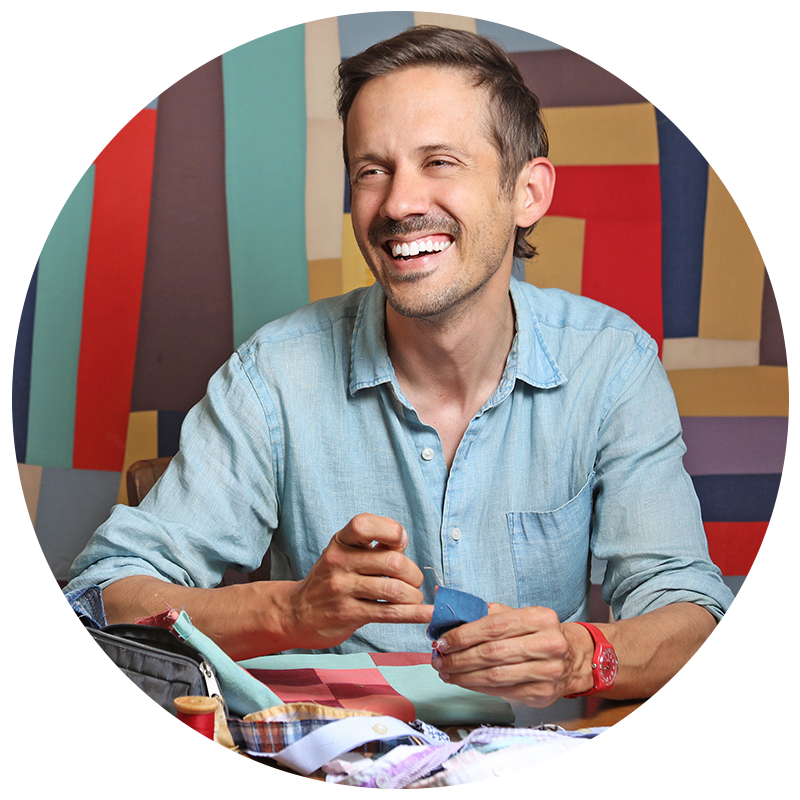



No Comments